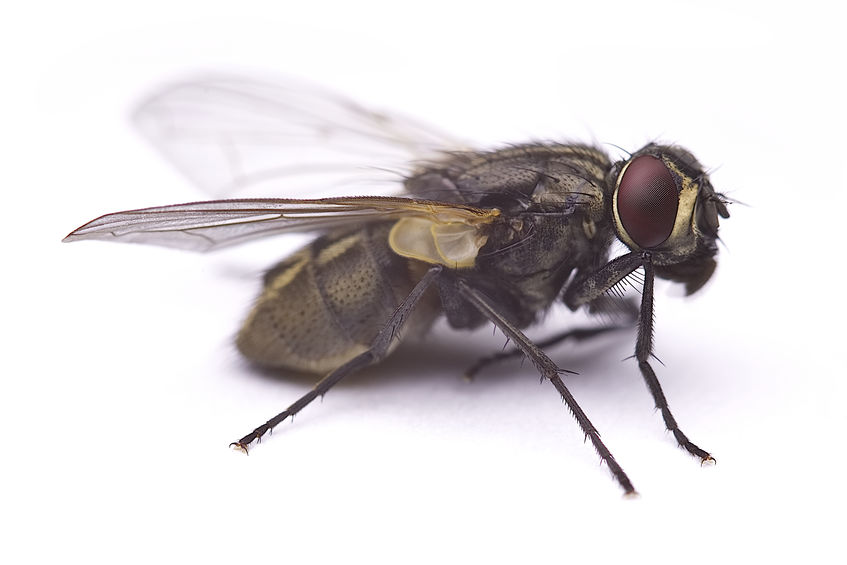Several fly species in the Diptera order are well known to be occasional pests of homes, including face flies, cluster flies, and blow flies, but the common house fly (Musca domestica) is a unique pest in that it lives solely in association with humans or human activity. In addition to being a nuisance, house flies harbor numerous pathogens that lead to disease. Some of these pathogens include shigellosis, typhoid fever, E. coli, and cholera. House flies have been found to carry more than one million bacteria on their bodies, which they can smear on human foods and indoor surfaces. Because of their close association with humans and the many pathogens they carry, the house fly is the most medically threatening non-biting fly species. When a large number of house flies enter human settings, serious public health issues arise.
Although house flies are nearly ubiquitous in the United States, they actually originate from central Asia, and today they are distributed on every continent where human populations exist. House flies originally reproduced on excrement, but they have adapted well to breeding on a variety of decaying sources of organic matter, particularly rotting food and garbage. This is why house flies gravitate toward urban and suburban areas where garbage is easy for the pests to come by. University researchers in Texas found that house flies prefer the following breeding sites (in descending order of preference): horse manure, human excrement, cow manure, fermenting vegetable matter, and kitchen waste. In addition to these breeding sites, other researchers have found that house flies are also highly attracted to fruit and vegetable cull piles, partially incinerated garbage, and composted manure. House flies are well known to carry bacteria given their filthy reproductive habits, but they can also transmit various strains/species of viruses, fungi, protozoa, and nematodes.
Have you ever contacted a pest control professional about a fly pest issue in your home?

